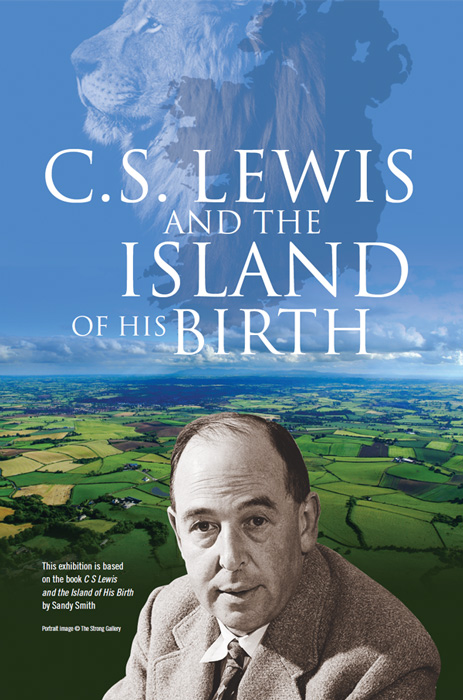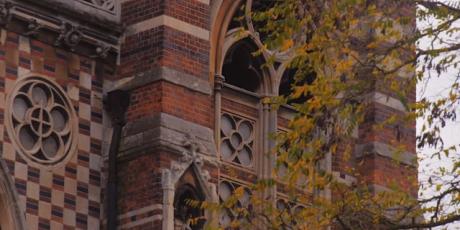C.S. Lewis and the Island of his Birth
In 1898, the year that C S Lewis was born, the old white Linen Hall in Belfast’s Donegall Square was demolished to make way for the new City Hall. Belfast was then one of the fastest growing ports in the British Isles. In that era, the manufacture of linen was one of two key economic drivers in the development of Belfast, and shipbuilding was the other.
Lewis’s grandfather Richard was a founding partner in the shipbuilding firm of MacIlwaine and Lewis, Boiler-makers, Engineers and Iron Shipbuilders. His maternal grandfather, the Rev. Thomas R Hamilton, was the first rector of St Mark’s Church in Belfast. The Hamiltons were related to the Ewarts, who owned one of the largest family businesses involved in the manufacture of linen. Belfast’s industrial and maritime development, along with the academic and clerical pursuits of his maternal grandfathers, brought the Hamilton and Lewis families to Belfast. These factors determined that C S Lewis was born in Belfast at the end of the 19th century.
From these beginnings in Belfast, C S Lewis developed his great affection for counties Antrim, Donegal, Down and Londonderry. His intriguing family story, however, goes beyond these to embrace the counties of Armagh, Fermanagh, Tyrone, and beyond Ulster to include the counties of Cork, Dublin, Kilkenny and Galway. Lewis’s story extends beyond Ireland to ancestral roots in Scotland and Wales.
Belfast: Dundela
C S Lewis was born in Belfast on 29 November 1898. He commences his book Surprised by Joy with these words:
"I was born in the winter of 1898 at Belfast, the son of a solicitor and a clergyman’s daughter."
Surprised by Joy is sub-titled The Shape of my Early Life, and it was in Belfast that Lewis’s early life took shape.
His parents, Albert and Florence Augusta (Flora), were married in St Mark’s Church in 1894. After their wedding they moved into Dundela Villas on Dundela Avenue, Holywood Road, Belfast. The following year their first son Warnie (Warren Hamilton) was born, and three years later Clive Staples Lewis was born.
The view from the nursery windows at the front of Dundela Villas was of the Castlereagh Hills, and from the back the view was of Divis Mountain, Colin and the Cave Hill.
Lewis says of the Castlereagh Hills:
"They were not very far off but they were to children quite unattainable. They taught me longing – Sehnsucht; made me for good or ill, and before I was six years old, a votary of the blue flower."
The garden of Dundela Villas is the source of Lewis’s early encounter with beauty and longing. The cause of the longing was a toy garden, created on the lid of a biscuit tin by Warnie using leaves, twigs and flowers he had gathered from the garden at Dundela.

Oil painting of Dundela Villas
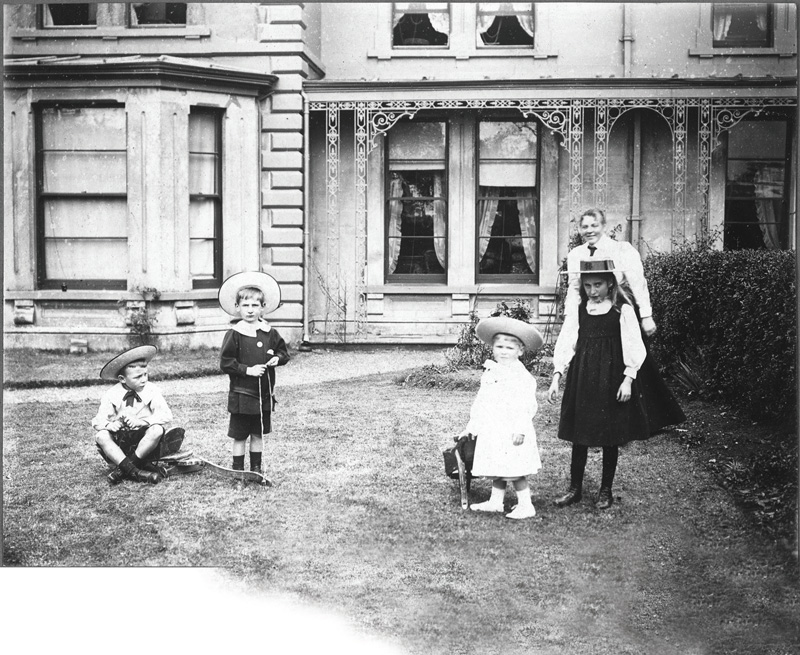
C S Lewis (in white) in the garden at Dundela Villas. Used by permission of the Marion E. Wade Center, Wheaton College, Wheaton, IL.
Belfast: Little Lea
In 1905 the Lewis family moved a short distance from Dundela to the new house Little Lea, which Lewis describes as being “further out into what was then the country”. This would be a somewhat surprising description today for visitors to the house on Belfast’s Circular Road. While his early life at Dundela was characterised by “humdrum happiness”, his boyhood at Little Lea, in sharp contrast, would always be remembered with “poignant nostalgia”.
The early years from 1905 to 1908 were idyllic. Lewis records the excitement and the enthusiasm of the family’s move to Little Lea.
“In 1905 my seventh year the first great event in my life took place. We moved house. – To me, the important thing about the move was that the background to my life became larger. – The New House is almost a major character in my story.”
The important and pleasurable things he remembered about the house included: his father’s books; the attics; the solitude of the gardens; his schooling under the guidance of his mother and local teacher Annie Harper; the view over Belfast Lough to the Cave Hill and also the sounds of the steam ships ploughing out of the Lough to English and Scottish ports.
“The sound of a steamer’s horn at night still conjures up my whole boyhood.”
In these idyllic surroundings the blows of change began to fall. Lewis’s mother Flora died at Little Lea in 1908 and his life was altered for ever.
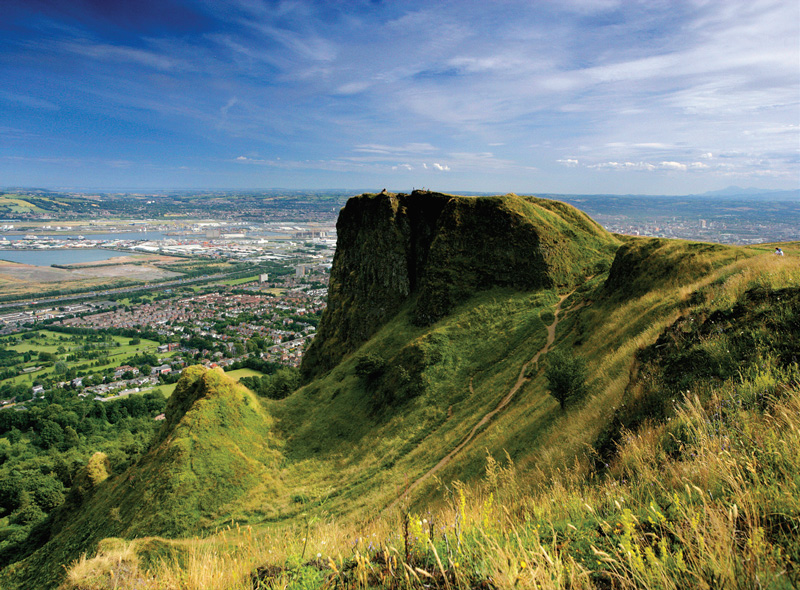
The Cave Hill
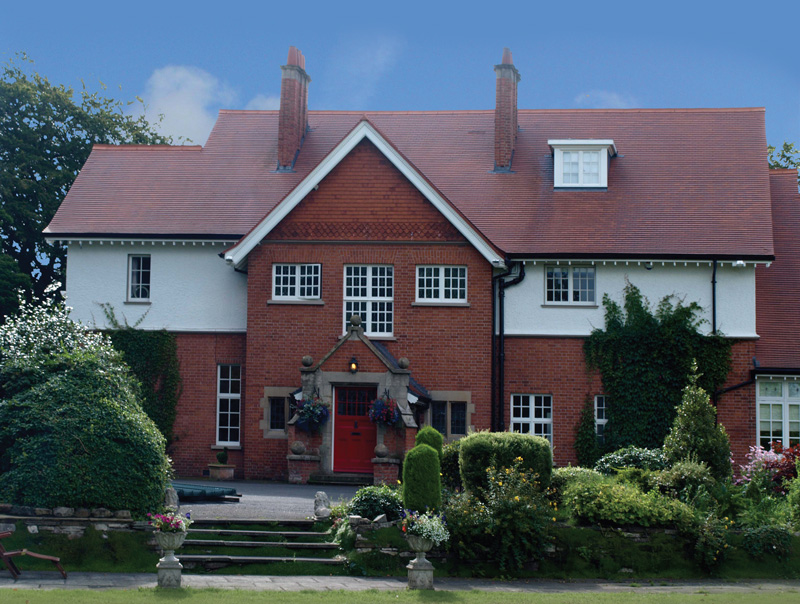
Little Lea
Belfast: St Mark’s Church
The Hamiltons, Lewis’s mother’s family, were brought to Belfast by the church. The Rev. Thomas R Hamilton served in the Royal Navy as a Chaplain and was based in Cork, where his daughter Flora, Lewis’s mother, was born (1862). Then, after serving as curate for four years in Holy Trinity Church in Rome, Flora’s father was appointed in 1874 as the Rector of St Mark’s, Dundela, and so her family came to Belfast.
From when Flora was 12 years old until her marriage, she lived with her parents in the Rectory beside the Church at St Mark’s. In 1894, she married Albert Lewis in St Mark’s Church and went to live at the nearby Dundela Villas, where C S Lewis and his brother were born.
Both boys were baptised in the font beneath the tall tower of St Mark’s Church by their grandfather. The Church holds the baptismal record for both events. As a teenager, C S Lewis was confirmed at St Mark’s but ideologically he was moving away from the Church. His first Communion was made in “total disbelief”, a position he reversed in later life when he became a convinced Christian and Christian apologist.
St Mark’s contains many memorials to Lewis’s immediate and extended family. The Lewis memorial window was commissioned by C S Lewis in memory of his parents and installed in the Church in 1933.
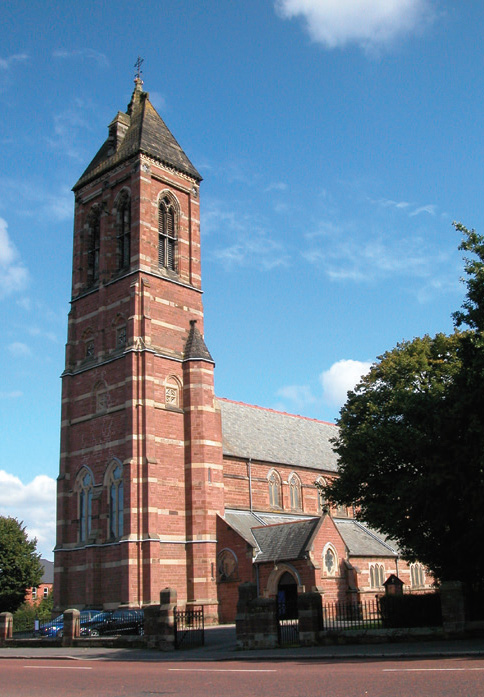
The tower of St Mark’s Church
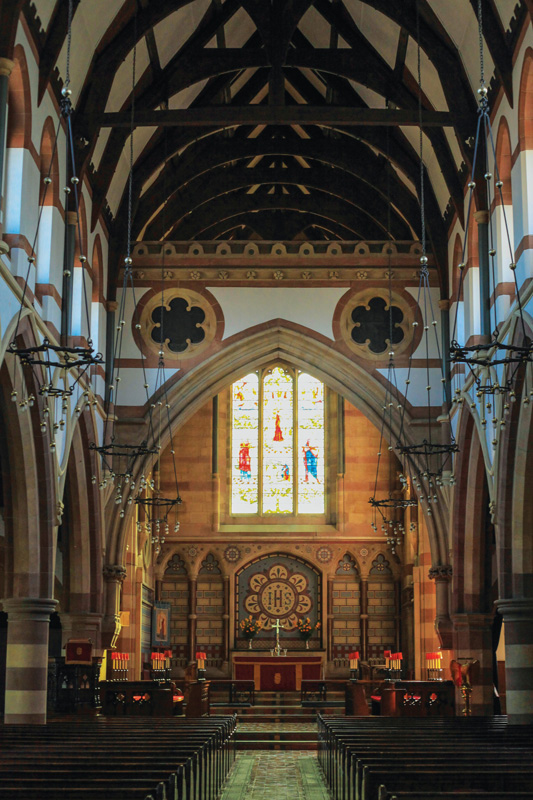
The interior of St Mark’s
Belfast: Campbell College
Following his mother’s death in 1908, C S Lewis’s education at Little Lea came to an abrupt end. He was sent off to boarding schools in England. This was an unhappy period in the life of young C S Lewis. His memory contained images of many journeys to Donegall Quay and leaving Belfast by steamer to return to schools in England that initially he did not enjoy.
The exchange of letters between Lewis and his father over the period 1908–1910 reflect the unhappiness of his early experiences of boarding school. In 1910, his father decided to send him to Campbell College in Belfast, and Lewis records that he was filled with delight at the prospect.
"I was delighted. I did not believe that anything Irish, even a school, could be bad."
Although Lewis was only at Campbell for a short time he says:
"I am always glad, as a historian, to have known Campbell…"
One of the lasting influences that can be traced to his time at Campbell College was his introduction to poetry by his English teacher Lewis Alden. Alden introduced him to Mathew Arnold’s poem Sohrab and Rustum. In Surprised by Joy he writes:
"I loved the poem at first sight and have loved it ever since."
The beginnings of a poet were stirred at Campbell College in Belfast.
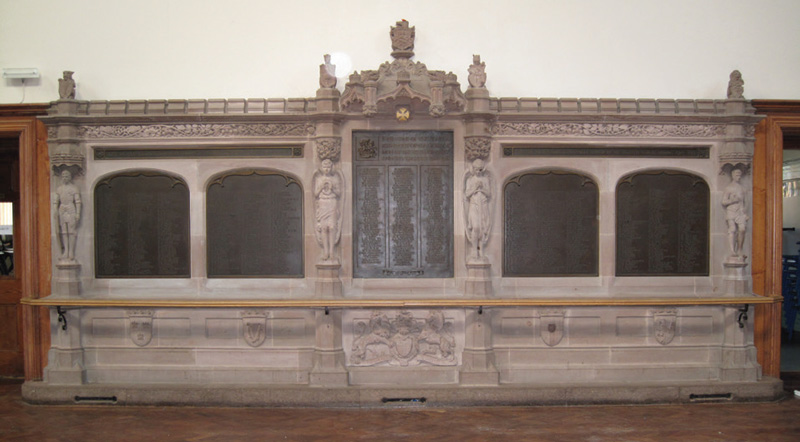
The war memorial in Campbell College by Rosamond Praeger
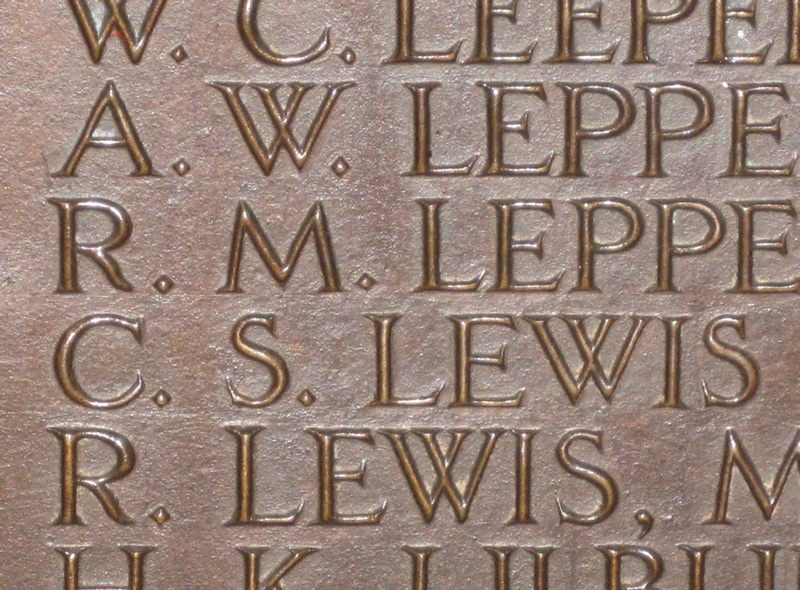
Lewis’s name on the memorial
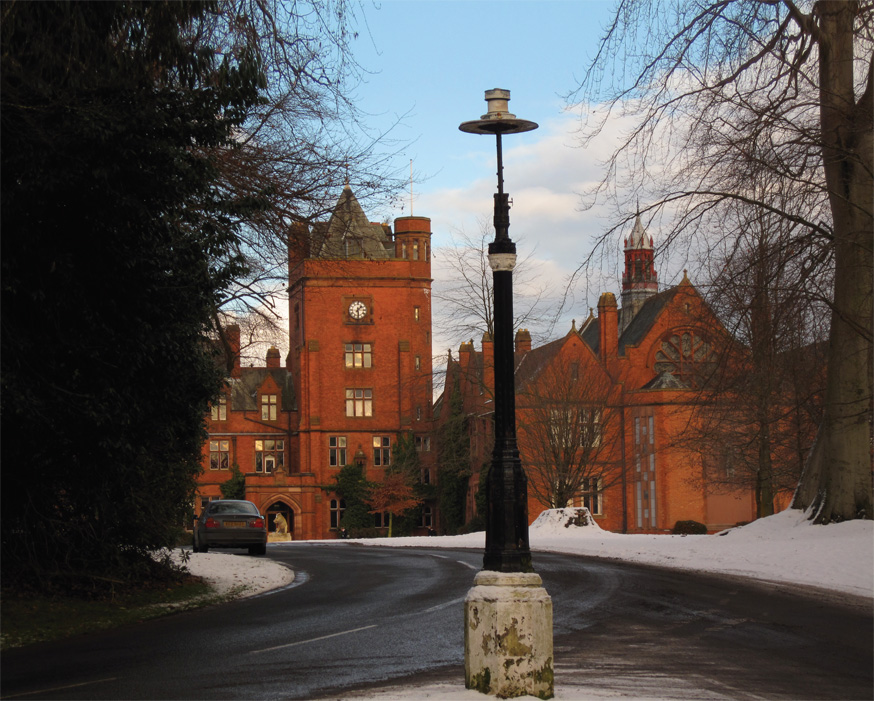
Campbell College
Belfast: City Centre
There are many places in Belfast that C S Lewis mentions in his books, letters and diaries. Many of these held poignant and deeply rooted memories that impacted on him for the rest of his life.
Donegall Quay
“Clop-clop-clop-clop we are in a four-wheeler rattling over the uneven square sets of the Belfast Streets. I am going to school for the first time … We reach the quay and go on board the old ‘Fleetwood boat’; after some miserable strolling about on deck my father bids us good-bye … Soon we are dropping down the Lough and there is the taste of salt on one’s lips and the cluster of lights astern, receding from us, is everything I have ever known.”
“Clop-clop-clop-clop we are in a four-wheeler rattling over the uneven square sets of the Belfast Streets. I am going to school for the first time … We reach the quay and go on board the old ‘Fleetwood boat’; after some miserable strolling about on deck my father bids us good-bye … Soon we are dropping down the Lough and there is the taste of salt on one’s lips and the cluster of lights astern, receding from us, is everything I have ever known.”
T E Osborne’s Shop
The street directories for Belfast list a well-known “General Merchant” in the city, T E Osborne, to whom Lewis refers. Osborne’s premises moved to a number of locations around the city centre in the early 1900s. It was in the shop of T Edens Osborne in Belfast’s Wellington Place that C S Lewis first heard a recording of Wagner’s Ride of the Valkyries.
“from that moment Wagnerian records ... became the chief drain on my pocket money.”
The street directories for Belfast list a well-known “General Merchant” in the city, T E Osborne, to whom Lewis refers. Osborne’s premises moved to a number of locations around the city centre in the early 1900s. It was in the shop of T Edens Osborne in Belfast’s Wellington Place that C S Lewis first heard a recording of Wagner’s Ride of the Valkyries.
“from that moment Wagnerian records ... became the chief drain on my pocket money.”
Grand Opera House
(shared site with the old Belfast Hippodrome)
“My father … often of a Saturday night would take us to the Belfast Hippodrome. What I enjoyed was merely the etcetera of the show, the bustle and lights, the sense of having a night out, the good spirits of my father in his holiday mood, and – above all – the cold supper to which we came back at about ten o’clock.”
(shared site with the old Belfast Hippodrome)
“My father … often of a Saturday night would take us to the Belfast Hippodrome. What I enjoyed was merely the etcetera of the show, the bustle and lights, the sense of having a night out, the good spirits of my father in his holiday mood, and – above all – the cold supper to which we came back at about ten o’clock.”
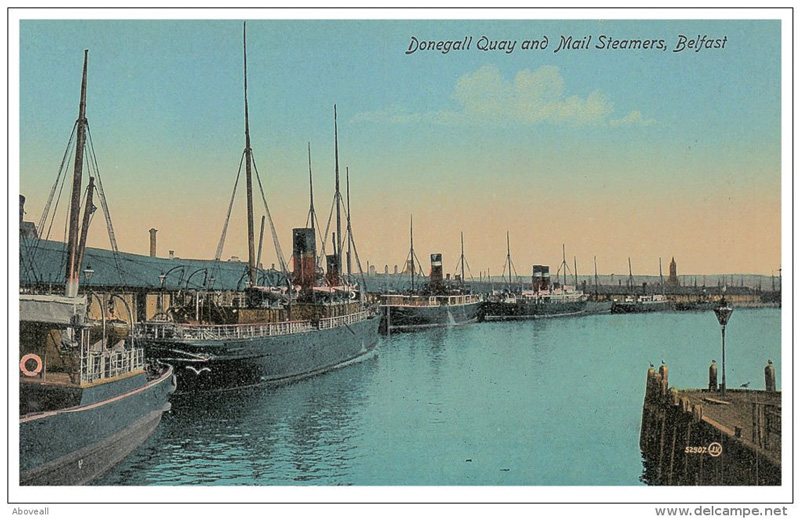
Donegall Quay circa 1900

T Edens Osborne’s shop as displayed at Ulster Folk & Transport Museum

Offices of Lewis and Condlin, 83 Royal Avenue
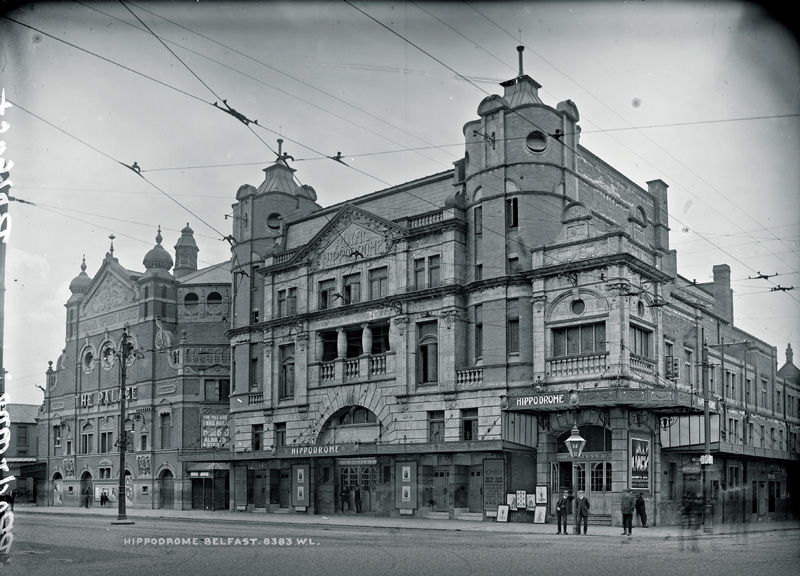
Belfast Hippodrome. Image courtesy of National Library of Ireland
County Down
The great affection that C S Lewis had for many locations in his native Ulster, and County Down in particular, is captured graphically in a conversation between David Bleakley and C S Lewis. Lewis invited Bleakley to define heaven and, on seeing Bleakley struggle with the challenge, he offered his own definition:
“Heaven is Oxford lifted and placed in the middle of County Down.”
This great love for County Down commenced with the view of the Castlereagh Hills from the nursery windows of Dundela Villas where he was born.
Lewis describes his main haunts as defined by the irregular polygon you would have described if you drew a line from Stormont to Comber … to Newtownards … to Scrabo … to Craigantlet … to Knocknagoney and back to Stormont.
The letters from his mother Flora to Albert record early family holidays spent at Ballynahinch and Killough that included visits to Ardglass and to the lighthouse at St John’s Point.
He enjoyed visits to Kilkeel and walks in the Mournes with his brother.
“I have seen Landscapes, notably in the Mourne Mountains which under a particular light made me feel that at any moment a giant might raise his head over the next ridge.”
When Lewis married Joy Davidman, they spent a belated honeymoon in 1958 at the Old Inn Crawfordsburn, Co Down.
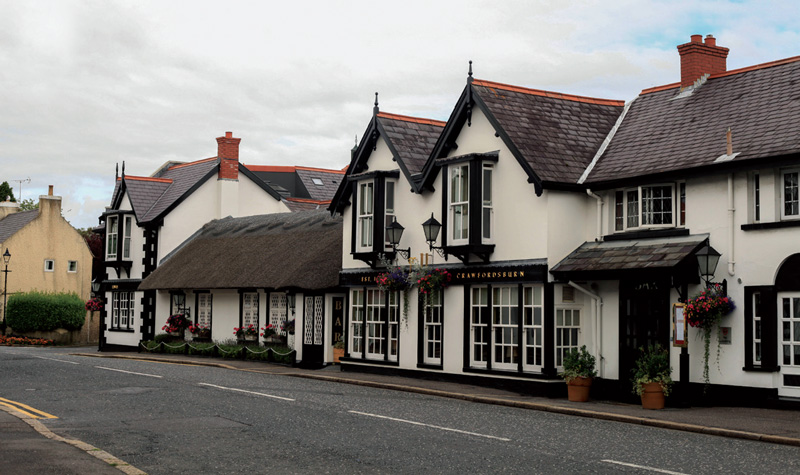
The Old Inn Crawfordsburn

Mourne Mountains viewed from Slieve Croob
Causeway Coast
In C S Lewis’s recollection of his earliest memories, he paints a vivid image of the view from the front of their home in Belfast, Little Lea. That view was the panorama of the mountain peaks of the Antrim Plateau: Divis, Colin and the Cave Hill. The Antrim shoreline of Belfast Lough was also part of that vista stretching from the Belfast shipyards to Carrickfergus.
The Lewis family spent the summer of 1901 at Ballycastle in County Antrim, and in 1904 the family returned to the North Coast, staying at Castlerock in County Londonderry. As an adult, C S Lewis returned to the north coast for walking holidays, staying at the Ballycastle Hotel. His letters and books refer explicitly to some of the locations along the Causeway Coast.
The ruined castle at Dunluce, perched precariously on its commanding position at the edge of the cliff-top, is undoubtedly significant among the images that made a lasting impression on young Lewis.
In The Last Battle, the closing scenes are of a landscape in the new Narnia. Farsight the eagle ultimately tells them that the landscape is of Cair Paravel, but the children have a recollection of this ancient castle “perched on the edge of the eastern sea”. Peter, the High King, says:
“It reminds me of somewhere. Could it be somewhere we once stayed for a holiday when we were very, very small ...”
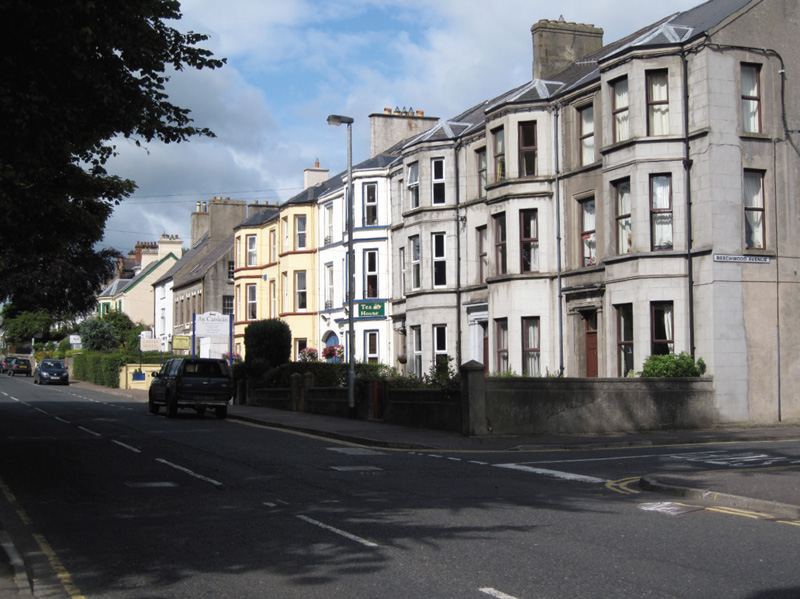
Quay Road, Ballycastle, where the Lewises stayed on holiday
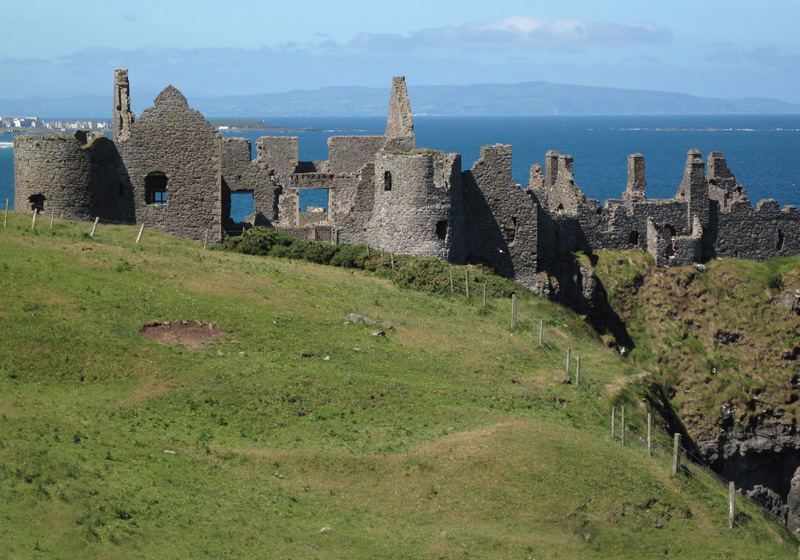
Dunluce Castle, County Antrim
County Donegal
Scattered throughout Lewis’s books, letters and diaries there are many references to County Donegal, which he enjoyed greatly. The early visits in 1916 were undertaken and shared with Arthur Greeves, and later visits included Arthur and his brother Warnie. Reflecting on a holiday visit to Portsalon in 1916 he writes:
“I remember, in particular, glorious hours of bathing in Donegal. It was surf bathing …the monstrous emerald, deafening waves …”
In August 1916 Lewis writes in a letter to Arthur:
“Portsalon is like a dream.”
In 1959 Lewis again makes arrangements to visit Donegal, staying at the Rathmullan Hotel. However, Donegal remained not only an important location and visual image for Lewis but a feeling. He coins a term that he uses as a literary description of a quality or a property of a piece of writing. Lewis called this its Donegality. By Donegality he meant the tone or the character of a story. Just as there are special places that each have a unique aura, so stories can convey a special feel or atmospheric quality.
“Lovers of Romance go back and back to such stories in the same way that we go back to a fruit for its taste; to an air for ... what? for itself; to a region for its whole atmosphere – to Donegal for its Donegality and London for its Londonness. It is notoriously difficult to put these tastes into words.”
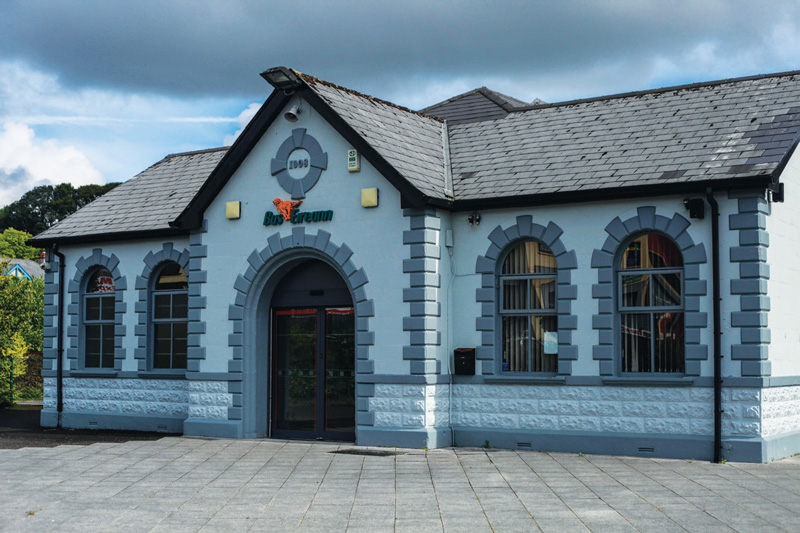
The former railway station in Letterkenny, County Donegal, from where Lewis travelled
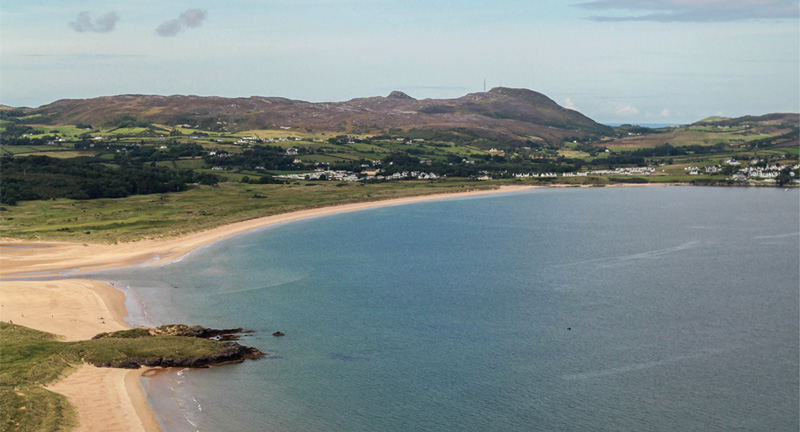
Portsalon, County Donegal
Ancestry of the Lewis Line
The Lewis family extends back over four generations to north east Wales. Richard Lewis I (c. 1775–1845) farmed a small holding in Flintshire near the small town of Caergwrle, not far from present-day Wrexham. He had one daughter and six sons. Joseph, his fourth son, moved to a village called Saltney, today a suburb of Chester, just across the Welsh border in England.
At Saltney, Joseph Lewis, also a farmer, married Jane Ellis in 1825. They had eight children and Richard II (1832–1908), their second son, developed an interest in engineering and marine engineering in particular. In 1853 he married Martha Gee and they moved to Cork in southern Ireland, where he worked as a boilermaker with the Cork Steamship Company.
In Cork, Richard and Martha had their six children, of whom Albert James, father of C S Lewis, was the youngest. The family moved to Dublin in 1864 and then in 1865 to Belfast, where Richard met John H MacIlwaine and they decided to set up in business together. The business of MacIlwaine and Lewis was established in January 1868. The Lewises settled in a house called Ty-isa off Parkgate Ave.
Albert Lewis was sent from Ty-isa to Lurgan College for his education. He became a solicitor and married Florence Augusta Hamilton in 1894. Their second son C S Lewis was born in Belfast in 1898.
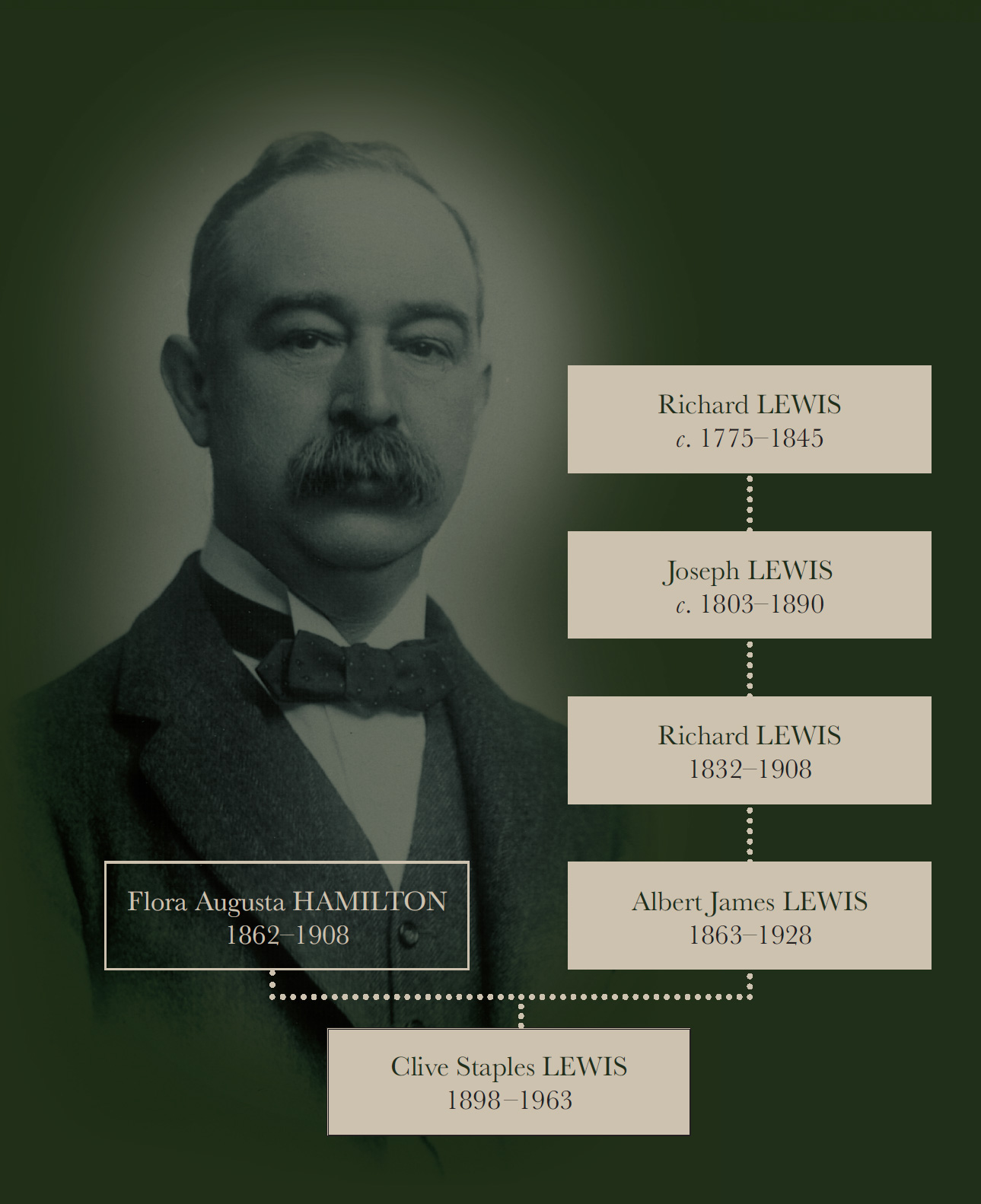
Albert James Lewis 1863–1929
Ancestry of The Hamilton Line
C S Lewis’s mother, Flora, was a Hamilton; the story of her family goes back to Scotland. The Ulster-Scots link extends beyond the plantation of Ulster and back through the Stewart Kings of Scotland to Robert the Bruce. Flora’s immediate Hamilton ancestors were a line of three generations of Church of Ireland Rectors and Bishops.
Flora’s father, the Rev. Thomas R Hamilton, was Rector of St Mark’s Dundela, her grandfather was Rector of Innishmacsaint in Co. Fermanagh, and her great grandfather, Hugh, was Dean of Armagh and ultimately Bishop of Ossory.
Bishop Hugh Hamilton (1729–1805) grew up at Hampton Hall, Balbriggan from where he went to study at Trinity College, Dublin, where he became Professor of Mathematics and Natural Sciences, before he entered the Church.
Bishop Hugh Hamilton came from four generations of Hamiltons that settled in Killyleagh. His great, great grandfather, also Hugh Hamilton (c. 1590), was a grandson of Sir James Hamilton of Finnart in Scotland. Hugh Hamilton arrived from Scotland at Killyleagh, where he became a denizen in 1616 and rented land at Lisbane from his relative James Hamilton, later Earl of Clanbrassil. The Finnart line of the Hamiltons can be traced back through Sir James Hamilton, the 1st Earl of Arran (1457–1529) to James I of Scotland (1406–1437) and to Robert the Bruce (1306–1329).
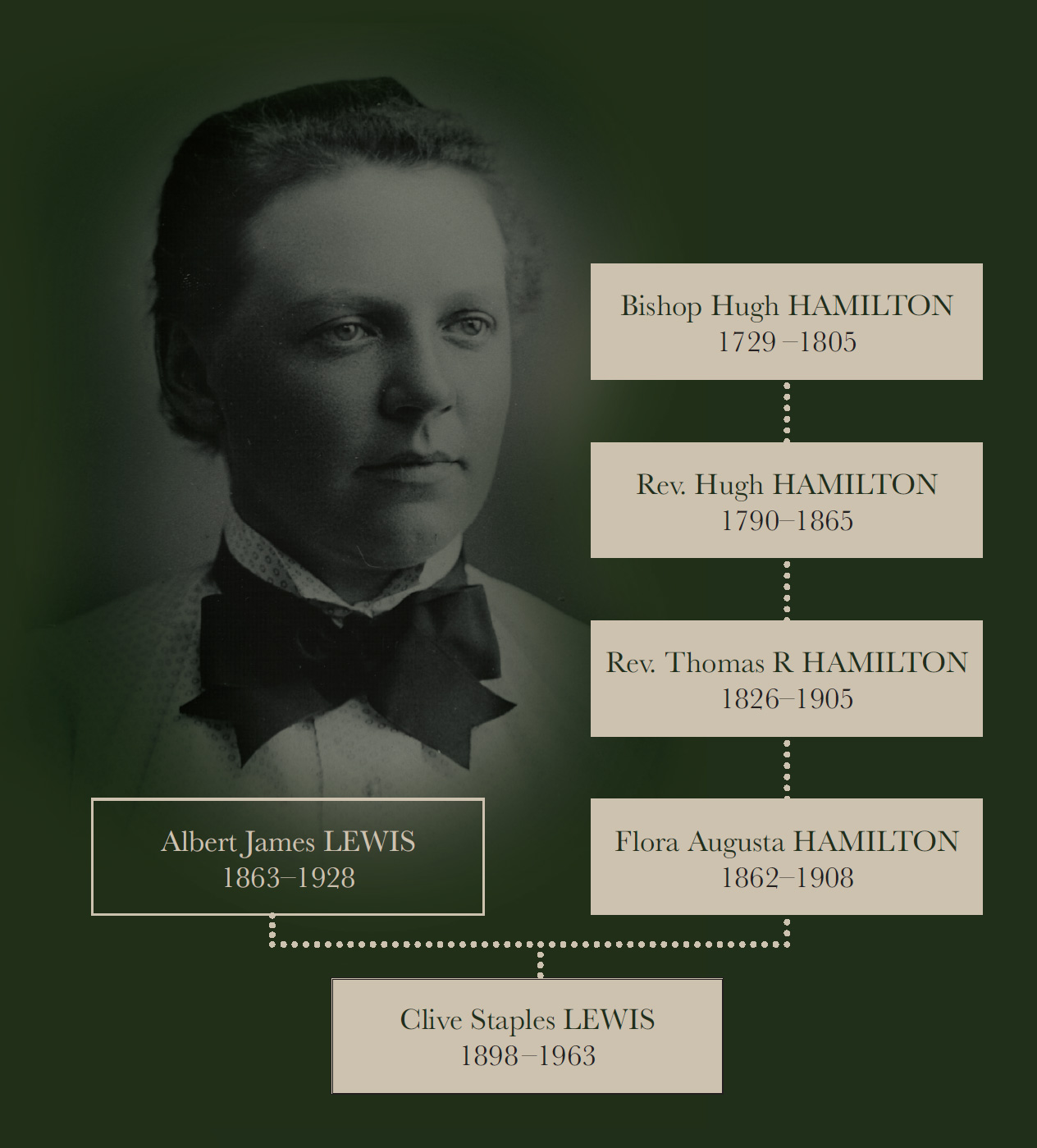
Flora Lewis (née Hamilton) 1862–1908
Fiction and Scholarship
Lewis is best known to children all over the world for his Narnia stories. These Chronicles comprise seven books of which The Lion, the Witch and the Wardrobe is probably the most well-known. Its popularity is due mainly to the fact that it was the first one to be published and many children read it before any of the others. In the chronology of Narnia, The Magician’s Nephew is where it all begins and the stories end with The Last Battle.
Long before the Narnia stories gripped the public imagination, Lewis had written the science fiction trilogy Out of the Silent Planet, Voyage to Venus and That Hideous Strength. The latter of these is dedicated to his Belfast friend Janie MacNeill. In 1945 he published The Great Divorce, and Till We Have Faces was published in 1956. Lewis considered the latter to be his best piece of fiction.
Lewis made an important and significant contribution to English Literature and criticism through his scholarly work. In 1936 he published The Allegory of Love, a study in medieval tradition, and in 1954 English Literature in the Sixteenth Century was published as part of The Oxford History of English Literature. These are but two of the many books, papers and lectures published during his academic career that spanned the years 1925–1960. Other well-known academic pieces include An Experiment in Criticism, The Discarded Image and A Preface to Paradise Lost.

The Lion, the Witch and the Wardrobe by C.S. Lewis
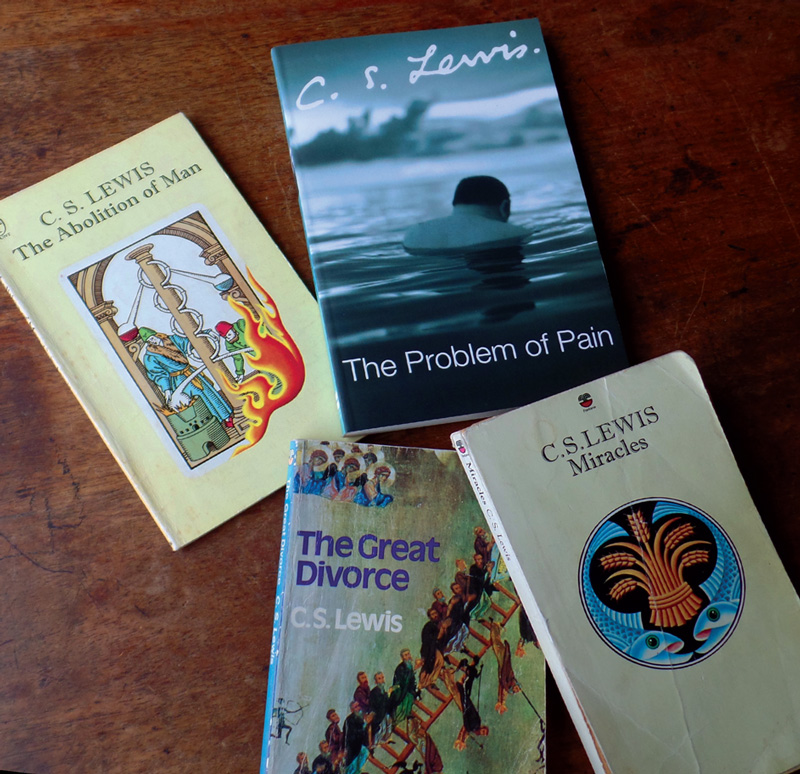
Fictional books by C.S. Lewis
Apologetics and Poetry
From his earliest years at Little Lea, C S Lewis was writing poetry and stories. He was particularly intentional about poetry. In the early part of his life, through his teens, the years of the First World War and his initial years as an Oxford Don, C S Lewis embraced an atheistic worldview. After his friendship and debates with JRR Tolkien and others, he abandoned atheism. He became arguably the most quoted Christian apologist of the century.
Lewis’s initial poetry developed across the years 1907–1917. One of the earliest, dated by his brother to 1907, was written when he was nine years of age. By the end of WW1 he had written some 40 pieces, which were published by Heinemann’s under the title of Spirits in Bondage. Lewis commenced his undergraduate studies at Oxford, after the war, as a published poet. Most of his other poetry was published within other works of prose and some was unpublished until 2015, long after his death. His poetry is now available under the title of The Collected Poems of C S Lewis.
Lewis outlined his journey from atheism to Christianity in books such as The Pilgrim’s Regress and Surprised by Joy. His debates in the Oxford Socratic Club and the BBC broadcasts during WW2 earned him a reputation as a skilful and persuasive apologist for Christianity. The broadcasts were initially published as three books, which were later combined and published as Mere Christianity. His other apologetic works include: The Problem of Pain, Miracles, The Abolition of Man and Letters to Malcolm.
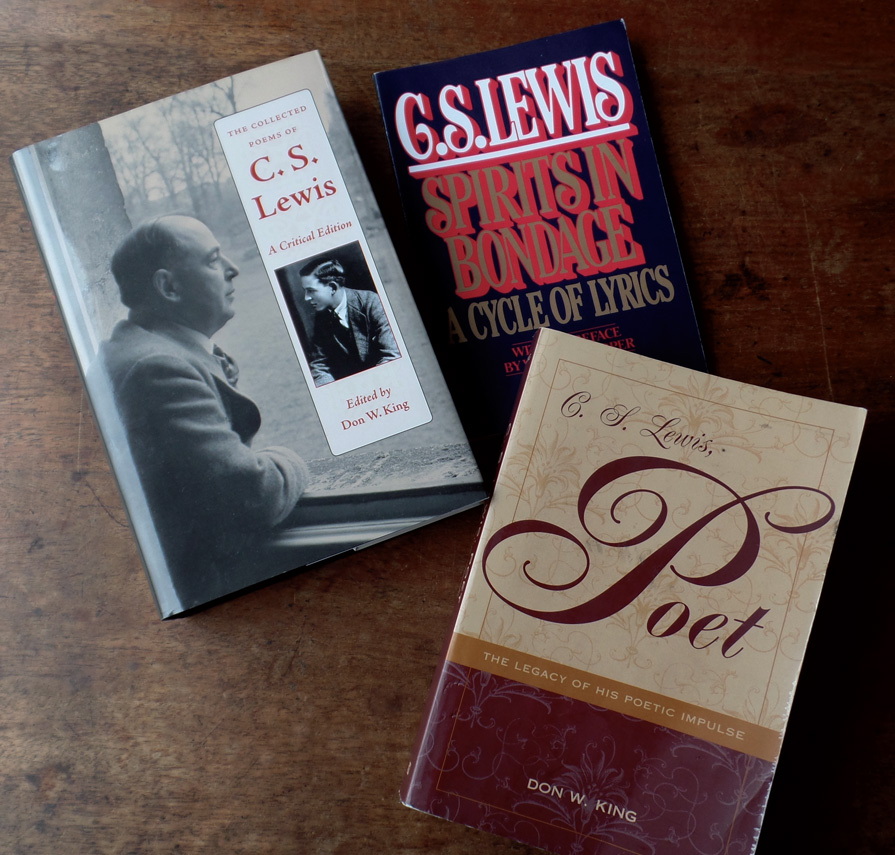
Apologetics and Poetry by C.S. Lewis

